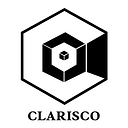The Major Difference Between Distributed Ledger Technology (DLT) and The Blockchain Technology.
“People Know About Blockchain Technology but slightly Hesitate About Distributed Ledger Technology.”
“Just Enter into this Topic”
Blockchain Technology:
These are the one form of Distributed ledger technology. It employs a chain of blocks that provide a valid distributed consensus and also it is more secure.
Blockchain managed a Peer-to-peer technology network so this is a distributed ledger. Here the server is managed without the Centralized authority. The database replication and the computational trust maintained its data quality.
Every block is linked to one another; the security is used by cryptography. Blockchain structure makes a unique kind of distributed ledger. The data on the blockchain are grouped and they organize Block.
It’s well suited for managing the records, recording events, transaction processing, assets tracing, and also voting. A blockchain is essential to growing the list of records. Here the data is added to the database.
In “2017”, bitcoin made a big rally. Apply the blockchain technology to others and also they use it like Government business, enthusiasts, and also economists. Bitcoin (Cryptocurrency) is the pioneer of blockchain technology.
Distributed Ledger Technology:
The distributed ledger is a database that has several nodes or computing devices. In this ledger, every node is replicated and they save their identical copies. In that network, each node updates itself independently.
The ledger does not maintain the central authority. Each node updates to the ledger and they are independently constructed and recorded. The copy and the voting agreement is called a consensus algorithm. When consensus has been reached, the ledger updates itself, and the latest version of the ledger is saved to each node separately.
The ledger intensively reduces the cost of trust. The main example of distributed ledger is “R3’s CORDA”. Thus the architectures and the structures of ledgers can help us to mitigate the dependence on banks, lawyers, governments, notaries, and regulatory compliance officers.
Distributed ledgers present a new model for how the information is collected and how they are communicated, and they are poised to revolutionize the way individuals, enterprises, and governments transact.
Conclusion:
This concept requires decentralization and consensus. Blockchain is a distributed ledger but not every distributed ledger is a blockchain, here it organizes data in blocks and updates their entries by using an append-only structure.
